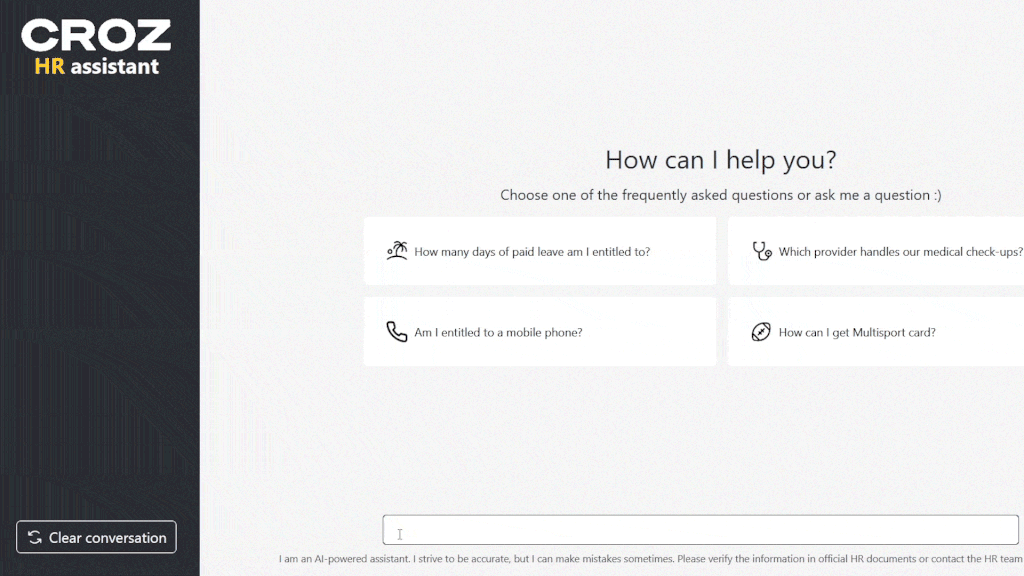“Learn to deal with the valleys, the hills will take care of themselves.” – Quincy Jones
Challenges in AI, different, yet bonding
In the current landscape of digital transformation, the roles of IT Directors, Digital Transformation Directors, and People & Culture Directors are more critical than ever. These key figures are at the heart of their organizations’ journeys toward technological advancement.
However, they often face complex challenges of integrating new technologies like AI while maintaining seamless daily operations.
| IT Director | Digital Transformation Director | People & Culture Director |
|---|---|---|
|
The challenge is multifaceted: ensuring system stability, maintaining cybersecurity, and managing legacy systems—all while exploring innovative AI solutions that could propel the organization forward. The prospect of adopting AI brings with it concerns about scalability, integration with existing infrastructure, and ensuring that new technologies align with the company’s overarching IT strategy. |
Grappling with the need to drive change and foster innovation across all departments. The push for AI implementation comes with its own set of hurdles: securing buy-in from stakeholders, demonstrating clear ROI, and navigating the often-ambiguous path of digital transformation. The fear of disruption and the potential for resistance from within the organization can stall even the most well-intentioned initiatives. |
Must consider how AI technologies will impact the workforce. Concerns about job displacement, employee engagement, and the ethical implications of AI are at the forefront. Additionally, there is the challenge of cultivating a culture that embraces change and encourages employees to see AI as an ally rather than a threat. Ensuring that staff are adequately trained and that the human element of the organization is not lost in the rush to digitalize is a delicate balancing act. |
Enough reasoning for a “joint venture”.
But with a deeper understanding of these diverse challenges, AI adoption doesn’t have to be a long and winding road, but a fresh summer breeze, a joyful play tailored to the specific needs of i.e. one single department. Taking into consideration that certain aspects of AI use, like AI assistants, are currently mature enough to be carefully placed in parts of the processes within the organization where it is obvious it brings business value. Quick and not dirty.
By starting with pilot projects that allow experimentation without jeopardizing existing systems we built and integrated AI assistant in a way that complements the current IT infrastructure. This careful approach minimizes risk and builds confidence in AI’s capabilities, providing a clear roadmap for more extensive implementation. Since there is a change in place a structured framework for AI adoption needs to be provided to focus on areas with high potential for quick wins and measurable impact. Like automating routine tasks which can demonstrate the immediate value of AI and help secure broader support from stakeholders.
And People and Culture have a perfect business fit use case.
AI: “Where can I assist you?” Start with the people’s frequently asked questions
For the People & Culture Director, it is important to use AI to enhance, rather than replace, human capabilities. Therefore, we introduced an AI assistant specifically designed for HR functions, such as automating the process of providing personalized relevant information to all employees, in real-time, based on the knowledge base the People & Culture team defined and will keep updating.

This simple business case emphasizes the importance of transparency and communication, ensuring that employees understand how AI can be used and the benefits it can bring to their roles and the organization as a whole. Moreover, this targeted use of AI allows HR teams to focus on more strategic initiatives, fostering a culture of continuous improvement and engagement.
Research supports this approach to AI adoption. According to McKinsey & Company’s “The State of AI in 2023,” companies that gradually implement AI see fewer disruptions and achieve higher satisfaction rates among employees and stakeholders. Similarly, Deloitte’s “2023 Global Human Capital Trends” report highlights how leveraging AI in HR functions can lead to significant improvements in productivity and employee engagement.
Adoptions love reusability. Ensures scaling with ease.
Did you expect an extremely complicated BizTech case? Disappointed? Don’t be.
For a change to have solid ground, we start small with a strong focus on elementary questions and simple facts. To find the right business case one should filter the stakeholders who will benefit primarily business-wise and immediately from this AI enhancement to consolidate and build a critical mass. After that, each one of them can be the “designated driver”, while monitoring the overall benefits this business case will bring.
| IT Director | Digital Transformation Director | People & Culture Director |
|---|---|---|
|
Successfully integrates AI into the IT infrastructure, enhancing system reliability and cybersecurity without compromising daily operations. IT team gains experience in building AI assistants. |
Sees a surge in support for AI initiatives, as early successes in automation and data analytics demonstrate clear value. |
Optimizes internal processes, observes a positive shift in employee sentiment, as people become more engaged and enthusiastic about the organization’s future. |
Don’t need to highlight the major mutual benefit – the fact if this investment is implemented properly it can scale fast and be replicated in numerous other contexts. This results in creating an environment that in sum generates significant operational cost optimization for the organization and helps the employees embrace modern capabilities with ease.
By carefully selecting pilot projects that will follow (i.e. support in customer care, support in PMO procedures…) and demonstrating the tangible benefits of AI assistants, the team builds the right momentum and fosters a culture of innovation across the organization.



